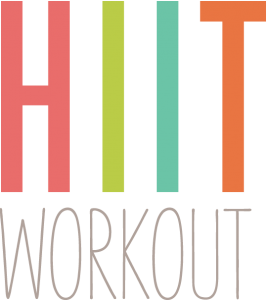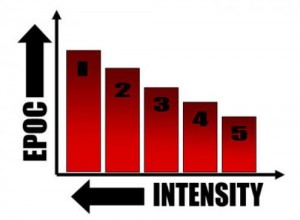 Take it from me, the Ex-Cardio Queen of Kansas City, “MORE” doesn’t always lead to “LESS” of you.
Take it from me, the Ex-Cardio Queen of Kansas City, “MORE” doesn’t always lead to “LESS” of you.
In fact, the opposite is quite true! Research solidly supports the concept of short interval high-intensity training followed by intervals of rest to be the most effective way to burn calories, lose fat and change your body fitness.
Why waste time and effort training wrong when you can maximize your workout results in half the time you once thought?

High-intensity interval training (HIIT) is a cardio respiratory and muscular training technique that alternates brief speed and recovery intervals to increase the overall intensity of your workout. HIIT is used by athletes and everyday exercise enthusiasts to reach performance goals and enhance fitness and well-being.
How does it work?
Most endurance workouts, such as walking, running, or stair-climbing—are performed at a moderate intensity, or an exertion level of 5-6 on a scale of 0-10. High-intensity intervals are done at an exertion level of 7 or higher, and are typically sustained for 30 seconds to 3 minutes, although they can be as short as 8-10 seconds or as long as 5 minutes; the higher the intensity, the shorter the speed interval. Recovery intervals are equal to or longer than the speed intervals.
High-intensity interval training is done at a submaximal level; around 80-95% of maximal aerobic capacity. Sprint interval training (SIT) is a type of high-intensity interval training that pushes beyond this level to 100% or more of maximal aerobic capacity, or an exertion level of 10.
High-intensity interval training may focus on cardio work only or ideally combine intervals of cardio and muscular training to yield maximal results. The surprising thing about HIIT is that it involves such a small total amount of exercise. By including HIIT in your exercise plan, you can realize remarkable results in a short amount of time, which is good news for busy people.

The payoffs of pushing yourself with HIIT are plentiful, and include:
- Significantly increased aerobic and anaerobic fitness
- Decreased fasting insulin and increased insulin sensitivity
- Reduced abdominal and subcutaneous (just under the skin) fat
- Shift in hormonal and physiologic changes that modify what you see in the mirror
- Increased metabolism and calorie burn for up to 48 hours after the workout, depending on the intensity

The exercise after-burn, or the calories expended (above resting values) after an exercise bout, is referred to as ‘excess post-exercise oxygen consumption’ or EPOC. This represents the oxygen consumption above resting level that the body is utilizing to return itself to its pre-exercise state.
The physiological mechanisms responsible for this increased metabolism include the replenishment of oxygen stores, phosphagen (ATP-PC) resynthesis, lactate removal, and the increased ventilation, blood circulation and body temperature above pre-exercise levels.
Studies have found that the magnitude (intensity of oxygen consumption) and duration (length of time the oxygen consumption is elevated) of EPOC is dependent on the intensity and duration of exercise. It generally takes anywhere from 15 minutes to 48 hours for the body to fully recover to a resting state.
Other factors influencing EPOC include training status and gender. It was also noted that several exercise method differences (e.g. seated versus a recumbent cycling, or exercise selection) contribute to a wide variance in time length of EPOC.

High-intensity exercise of any type brings with it a higher risk of musculoskeletal injury and cardiac events. But along with healthy subjects, HIIT has been studied as a training method for people with heart disease and congestive heart failure. Under clinical supervision, subjects were able to tolerate high-intensity intervals without negative effects. Most importantly, they experienced bigger improvements in cardiovascular function compared to those undergoing continuous moderate-intensity training.
The bottom line? HIIT may or may not be safe for you. Check with your health care provider before adding it to your exercise plan.
At Pilates 1901, we’ve made sure to offer a variety of Pilates based movements to allow you choice in your workout week.
Our classes employ the five basic principles of Pilates to help you get the most out of your workouts each time you attend a private or class session. We know that to get the most from your workouts you need to be focused, strong and connected. That’s what Pilates as a foundation provides for you.
If you are more seeking to get more intense, burn more calories in less time and see rapid results, we urge you to try out some our high intensity interval training classes:
- Cardio Kettlebells
- Cardio Sculpt
- Power Sculpt
- Zumba
- Cardio Tramp* (requires reformer experience for entry)
- and more! Click here to view a full list of Pilates 1901’s class offerings.
You may have to work up to finishing in these workouts but the results and efforts are truly worth your time. And remember, it will take less of that too to give you more results!
Questions? Email us today so we can help!

 Take it from me, the Ex-Cardio Queen of Kansas City, “MORE” doesn’t always lead to “LESS” of you.
Take it from me, the Ex-Cardio Queen of Kansas City, “MORE” doesn’t always lead to “LESS” of you.
